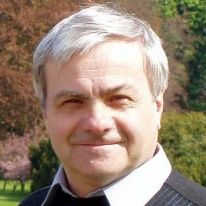Collective and Non-Equilibrium Phenomena in Quantum Gases and Superconductors
A special issue of Applied Sciences (ISSN 2076-3417). This special issue belongs to the section "Quantum Science and Technology".
Deadline for manuscript submissions: closed (10 July 2022) | Viewed by 2527
Special Issue Editor
Interests: condensed matter physics; quantum gases; polaron theory
Special Issues, Collections and Topics in MDPI journals
Special Issue Information
Dear Colleagues,
Recent experimental and theoretical studies in condensed matter and quantum gases show an increasing intersection of these two areas, because underlying physical mechanisms are remarkably similar. In superconductors and superfluid Fermi and Bose gases, the same phenomena (such as Higgs collective modes, Josephson junctions, multigap condensation) are currently being studied in the two communities.
In the same way, recent experimental breakthroughs on exciton–polaritons condensates have opened a new window on the physics of strongly interacting and out-of-equilibrium bosonic fluids, at a time when experiments on quenched atomic Bose–Einstein condensates are challenging state-of-the-art theories of interacting bosons by accessing new interaction regimes.
In this Special Issue, we focus on topical subjects of pair-condensed fermionic systems and out-of-equilibrium bosonic systems. We would like to confront recent experimental results on collective oscillation modes, polaritons, vortices, Josephson junctions, and other collective phenomena. We are also interested in highlighting to this audience topics of broader relevance such as bosonic mixtures, quenched dynamics, and non-equilibrium features in both ultracold and driven-dissipative condensates, to bring out other features of mutual interests across different condensed matter systems.
The main goal of this Special Issue is to bring together experts of condensed matter and ultracold quantum gases who are facing the same issues, and thus to contribute to the flow of innovative ideas between the two fields. The scope of the Issue includes new original experimental and theoretical results and review papers.
Dr. Serghei Klimin
Guest Editor
Manuscript Submission Information
Manuscripts should be submitted online at www.mdpi.com by registering and logging in to this website. Once you are registered, click here to go to the submission form. Manuscripts can be submitted until the deadline. All submissions that pass pre-check are peer-reviewed. Accepted papers will be published continuously in the journal (as soon as accepted) and will be listed together on the special issue website. Research articles, review articles as well as short communications are invited. For planned papers, a title and short abstract (about 100 words) can be sent to the Editorial Office for announcement on this website.
Submitted manuscripts should not have been published previously, nor be under consideration for publication elsewhere (except conference proceedings papers). All manuscripts are thoroughly refereed through a single-blind peer-review process. A guide for authors and other relevant information for submission of manuscripts is available on the Instructions for Authors page. Applied Sciences is an international peer-reviewed open access semimonthly journal published by MDPI.
Please visit the Instructions for Authors page before submitting a manuscript. The Article Processing Charge (APC) for publication in this open access journal is 2400 CHF (Swiss Francs). Submitted papers should be well formatted and use good English. Authors may use MDPI's English editing service prior to publication or during author revisions.
Keywords
- quantum gases
- superconductors
- collective excitations
- non-equilibrium phenomena





